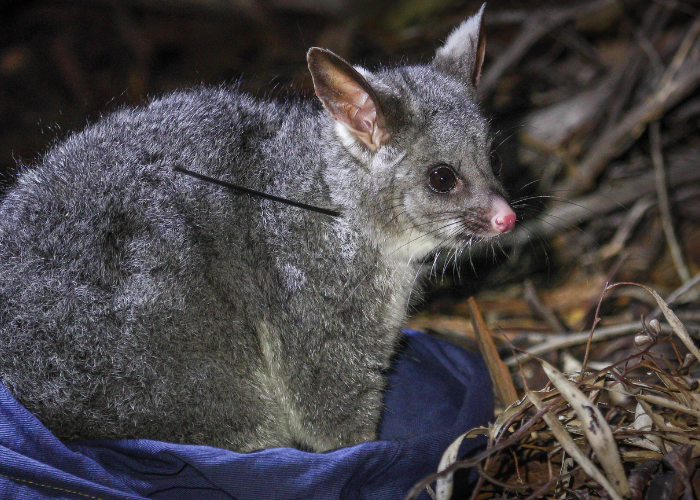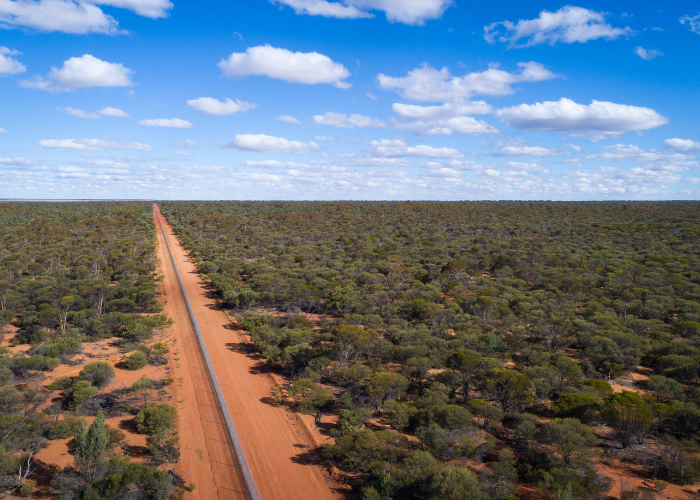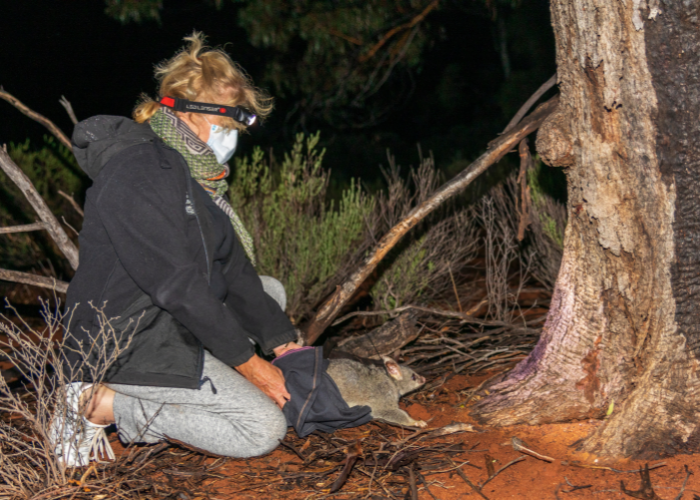Australian Wildlife Conservancy (AWC) is raising the bar for rewilding projects with the reintroduction of Brush-tailed Possums to Mt Gibson Wildlife Sanctuary in the WA wheatbelt, where they have been regionally extinct since the early 20th century.
A total of 39 possums were safely translocated from Karakamia Wildlife Sanctuary in south-west Western Australia and Dryandra Woodland to Mt Gibson throughout the month of May. Nineteen of the brave brushtails were released outside the predator-proof fence – a significant step building on years of feral cat and fox control and research. The possums are the first species to be reintroduced by AWC outside the 7,800-hectare safe haven, which is already home to 8 other species of reintroduced mammals. The other 20 possums were liberated within the fenced haven.
All possums were in good health upon release, according to Georgia Volck, AWC Senior Field Ecologist. She described the release of these pioneering marsupials as an exciting event and a significant breakthrough for AWC’s long-term goal of reestablishing threatened and locally extinct species.
“The reintroduction of the Brushtail Possum to AWC’s Mt Gibson Wildlife Sanctuary fills an important ecological niche – it’s the first time a large arboreal herbivore has been restored to the region,” Georgia explained. “This is expected to have a range of effects on other parts of the ecosystem, which will continue to be monitored at Mt Gibson for years to come.”
 Brad Leue/AWC
Brad Leue/AWC
“It is also a huge milestone for us to be able to release a small number of these animals outside the fenced area at Mt Gibson, where we’ve been focussing on monitoring feral predators and implementing control measures. Post release we will be tracking the survival, dispersal and habitat use of the radio collared individuals closely, as well as using camera traps to monitor non-collared possums. We’re hopeful they will do well outside the fence and will begin to establish and reproduce.”
AWC’s Mt Gibson science team will closely track the survival and establishment of the Brushtail Possum populations both within and outside the fenced area over the next few months, using a combination of radio collars, camera traps and spotlighting surveys. The team plans to release a further group of Brushtail Possums in June.
 Brad Leue/AWC
Brad Leue/AWC
Brushtail Possums are currently extinct in the Wheatbelt region and the species was chosen as a candidate for this reintroduction outside the cat and fox-free zone due to its size and tenacity, which may confer an advantage in confronting killer cats and foxes. To aid the re-establishment and to ensure their ongoing survival at Mt Gibson, a cat and fox suppression program has been implemented across the broader sanctuary, with the goal of reducing cat and fox numbers through intensive baiting, trapping and monitoring.
For more information on AWC’s reintroduction plans and the work conducted at Mt Gibson Wildlife Sanctuary, click here.
 Jane Palmer/AWC
Jane Palmer/AWC
Australia’s wildlife needs our help now more than ever. Please support this groundbreaking project and help save Australia’s threatened wildlife.
Under the $3 million Matching Challenge you can double the impact of your gift. Please click here to find out more.